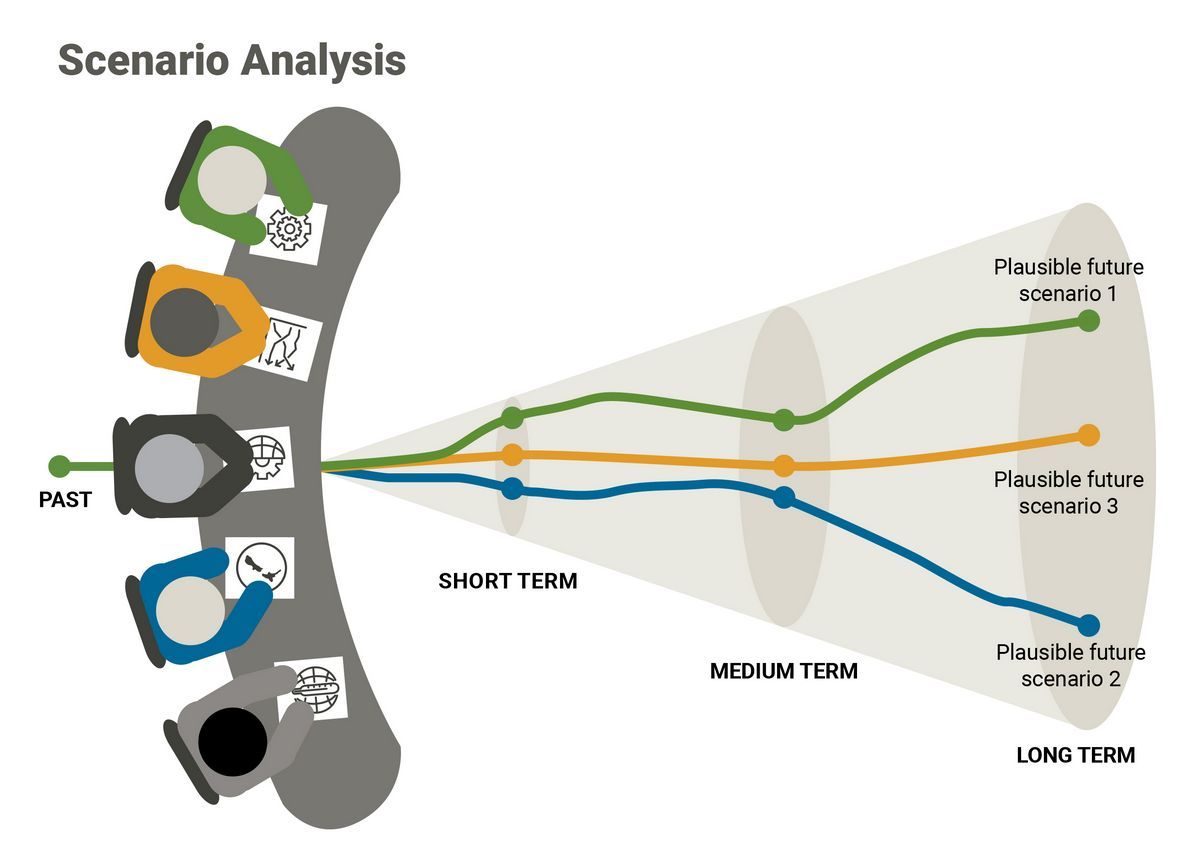
Contents
Turn What-if to What-Now: Scenario Analysis’s Importance
Formerly known as "what-if," scenario analysis has become a vital tool in management. As VP of a market research firm, I relied on this method to grow a software company from zero to over $10 million in annual sales. Today, in the face of the COVID-19 crisis, it offers the best way to navigate uncertainty.
What is scenario analysis?
Scenario analysis involves examining potential outcomes and developing corresponding action plans. For businesses grappling with uncertainty, creating multiple scenarios and devising plans becomes crucial for survival. To develop diverse scenarios, consider the following questions:
- Time to recovery: How will the world bounce back from the economic crisis? Will the reopening of businesses be gradual?
- Impact on sales: If sales drop by 30%, what will be done about payroll and expenses? How about a 50% or 70% decrease?
- Length of crisis: If the downturn persists for two months, six months, or even a year, what steps should be taken?
- Impact of social distancing: How long will social distancing measures remain in place, and what effect will they have on your business?
- Available financing: Can you secure an emergency payroll loan, and how will it affect your financials?
- Scarcity: Will essential inputs experience shortages? What if their prices skyrocket and availability plummets?
- Workforce retention: How long can you retain employees without resorting to layoffs? How much will it cost to replace them when the economy recovers? Should the executive team take a salary cut?
- Expense reduction: Which expenses are truly discretionary? What is the impact of each cut?
For each question, and all others that arise during uncertain times, working with scenarios is essential. Each scenario incorporates crucial figures and explores their impact on the bottom line, helping you gauge cash burn rate and runway. Presenting contingency plans using numbers enhances comprehension and confirms you are on the right track toward meaningful change.
Why is scenario planning important?
Simply put, scenario planning offers a superior way to anticipate the future, and business owners excel in this area. Prior to starting my own business, I worked as a market researcher, specializing in forecasting. Despite my extensive business education and proficiency in complex modeling techniques, I discovered that these mathematical approaches rely on past trends dictating the future. Contrastingly, business owners excel at future prediction by merging numbers, past experiences, and intuition.
Scenario analysis optimizes this marriage of numbers and intuition. For example, you can begin with an original pre-crisis sales forecast and create a scenario in which sales plummet. By referring to your original expense budget, you can determine which expenses to trim in case of prolonged lower sales— whether it be over 3, 6, or 12 months. The correlation between numbers helps guide your decision-making and enables you to plan for various timeframes.
The key benefit of scenario analysis lies in its flexibility. You can revisit and adjust the analysis as needed based on updated budgets, revenue figures, and changes in the economic landscape. This allows your instincts to align with the numbers, making adjustments based on actual performance and predictions regarding market fluctuations.
How to conduct scenario analysis
Accurate management necessitates reliable numbers—a responsibility that rests with either you, the business owner, or a capable member of your team. Particularly during a crisis, robust projections for future sales, cost of sales, expenses, profit (or loss), and cash flow are indispensable. Here are a few approaches for conducting scenario analysis, along with corresponding steps:
1. Gather accurate and up-to-date financial information for your business.
2. Identify critical variables and determine a range of potential outcomes for each.
3. Explore the various scenarios by adjusting the variables and observing the impact on financials.
4. Assess the implications of each scenario for your business and its survival.
5. Refine your plans by aligning them with the most likely scenarios and incorporating measurable milestones.
Remember, scenario analysis is an ongoing process. Continually monitor your performance, update your projections, and adapt your plans accordingly.
Hello!
I’m Andrew Brooks, a seasoned finance consultant from the USA and the mind behind phonenumber247.com.
My career is built on a foundation of helping individuals and businesses thrive financially in an ever-changing economic landscape. At phonenumber247.com, my aim is to demystify the complex world of finance, providing clear, actionable advice that can help you navigate your financial journey with confidence. Whether it’s personal finance management, investment strategies, or understanding the nuances of market dynamics, I’m here to share insights and tools that can propel you towards your financial goals.
Welcome to my digital space, where every piece of advice is a step closer to financial clarity and success!
